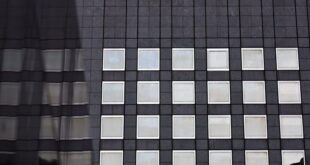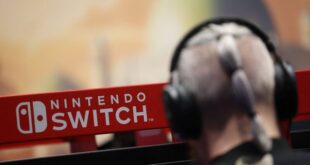NEW YORK (Reuters) – Bullish investors are hoping Wednesday’s earnings report from chip heavyweight Nvidia can rejuvenate a U.S. stocks rally that has stumbled in recent weeks.
Nvidia shares have tripled in 2023, underscoring how a rebound in megacap stocks and excitement over the business potential of artificial intelligence have helped propel the S&P 500 to a 14% gain this year.
The chipmaker’s year-to-date increase has led gains among the so-called Magnificent Seven group of megacap stocks, which also include Apple and Microsoft. The group’s collective rise was responsible for roughly two-thirds of the S&P 500’s increase through July.
Yet the broader equity rally has recently faltered, with the benchmark index off more than 4% in August as soaring Treasury yields threaten to dull the allure of stocks. The market’s turbulence is intensifying focus on Nvidia’s fiscal second quarter report, due after market close on Wednesday.
Nvidia is at the center of “two big themes the market is concerned about right now: Can Big Tech continue to lead the market, and is this AI story for real?” said Anthony Saglimbene, chief market strategist at Ameriprise Financial, which is slightly overweight the tech sector.
“A little piece of good news in a stock that has been an important driver to the market could change the sentiment,” he said.
Nvidia stunned the market with its prior report in May, when a stellar forecast sent its stock soaring 24% in one day. Following that report, the S&P 500 technology sector rallied 8% over the next five days.
Driving the company’s gains has been its position as a beneficiary of the rise of ChatGPT and other generative AI apps, virtually all of which are powered by its graphics processors.
In one sign of AI’s overall market boost, a Societe Generale analysis zeroing in on 20 stocks widely owned by AI-related exchange-traded funds found that removing those stocks from the S&P 500 would cut index performance by roughly 13 percentage points, leaving it with only a marginal gain for the year.
Some investors may already be placing bets on a repeat strong performance: Nvidia shares have jumped nearly 12% since the start of last week, setting an all-time high on Tuesday before retreating. Such buildup in the shares, however, could make it more difficult for the company to surpass investor expectations with its Wednesday report.
“My guess is the numbers are going to be just fine, but is it going to be enough?” said Chuck Carlson, chief executive officer at Horizon Investment Services. “If it’s not, you could see a continuation of the sell-off that we have had here in the last month or so.”
Options in Nvidia imply a nearly 11% swing for the shares, in either direction, by Friday, according to Trade Alert data. That compares with the 8.6% average move logged by the stock on the day after the chipmaker has reported results over the last eight quarters.
Nvidia shares amount to the fifth-biggest weight in the S&P 500 and Nasdaq 100, at weights of 3.2% and 4.3%, respectively – meaning that moves in its stock price have an outsized sway on major indexes.
Nvidia’s earnings report is not the only closely watched market event in the coming days. Investors will also be focused on a speech from Federal Reserve Chairman Jerome Powell at the central bank’s annual conference in Jackson Hole, Wyoming, later this week.
Signs that the central bank intends to hold rates around current levels for longer than investors had anticipated could further weigh on stocks.
Still, few can deny the sway that Nvidia and megacap stocks have held over broader markets this year.
Nvidia was one of 11 stocks named by Goldman Sachs as near-term beneficiaries of the “AI revolution.” In a Monday note, Goldman analysts said an equal-weighted basket of those 11 stocks had returned 69% so far in 2023, outpacing a 7% gain for the overall equal-weight S&P 500.
“Some of these stocks have already seen 2024 EPS estimates rise on the back of AI adoption, with NVDA representing a notable example,” the Goldman analysts wrote.
(Reporting by Lewis Krauskopf in New York; Aditional reporting by Saqib Iqbal Ahmed in New York; Editing by Ira Iosebashvili and Matthew Lewis)
 BeritaKini.biz Berita Viral Terkini di Malaysia
BeritaKini.biz Berita Viral Terkini di Malaysia





